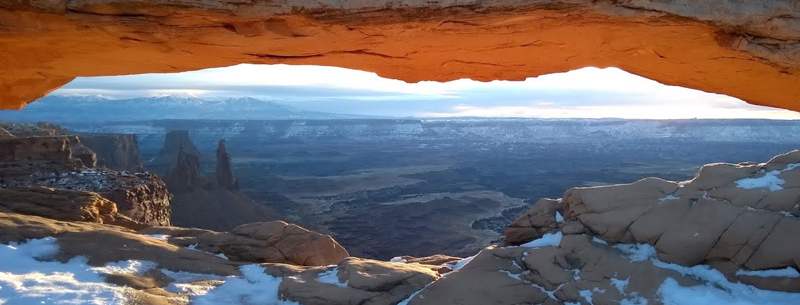Grand Circle Road Trip Itinerary
6 National Parks – 1,452 Miles – 4 States
The area of the United States that includes northern Arizona, northwest New Mexico, southern Utah, and southwest Colorado is often known as the “Grand Circle” of the southwest. The Four Corners region of these states provides a concentration of some of the world’s best National Parks, ancient ruins of civilizations gone by, deep canyons, wildlife, and wind weathered sandstone formations. The best way to get around this area is by car. A road trip through the Grand Circle will bring you to spectacular sites Arizona’s wondrous Grand Canyon, the famous Cliff Palace dwellings, the spikey hoodoos of Bryce Canyon, and even the underground caves of Great Basin National Park.

Arches National Park
Thousands of natural sandstone arches in the eastern Utah desert
Near the Colorado – Utah border lies Arches National Park. Thousand of sandstone arches have been created via a long process of erosion. A large salt bed just underneath Arches pushed up the rock sandstone layer thousands of years ago, causing the layer to become exposed to the windy, dry elements of the Utah desert. Over time, wind and water-carved strange formations like famous Delicate Arch, or the world’s longest arch, Landscape Arch.
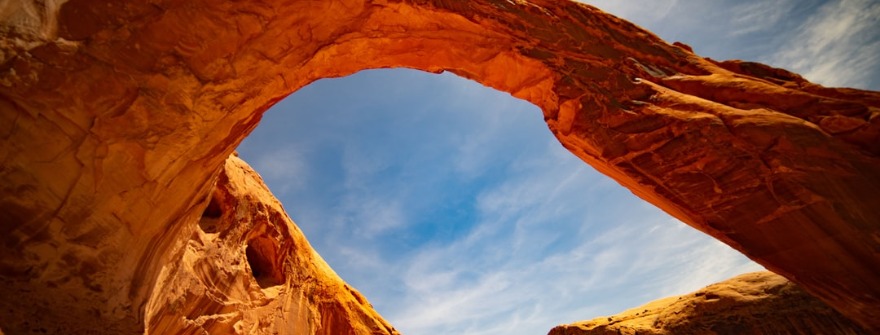
Arches is adjacent to the town of Moab. This small town is the ideal stopping point on your road trip to see both Arches and Canyonlands. Like most of the southwest, this area can be extremely hot in the peak summer months, so plan light early morning and late afternoon hikes during that time of year.
Bryce Canyon National Park
Explore the hoodoos and rock formations of Bryce
As your journey around the circle continues, you’ll enter the region of southeast Utah and the Bryce-Zion region. These two parks are almost always coupled together in trip booking because of their proximity. Bryce Canyon is a large amphitheater, a product of water and wind erosion, that has resulted in thousands of red-orange rock spires called hoodoos.
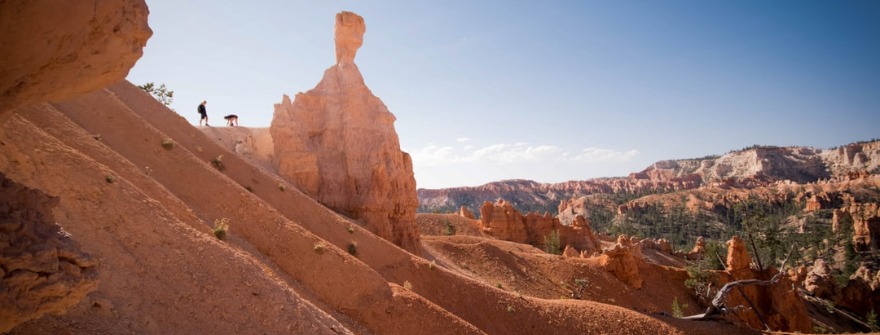
The rocks of Bryce are best seen during dawn or dusk, as the colors best complement the rocks. This park can get very busy during the peak summer months as kids get out of school, so plan your trip before mid-June or after Labor Day if possible.
Black Canyon of the Gunnison
The deep canyon of Colorado’s Gunnison River
Black Canyon of the Gunnison was just made a National Park in 1999, so it’s a rather recent addition to the National Park system. A giant slice in th earth can be found at Black Canyon, with the Gunnison River a massive 2700 feet below. The deep, black marbled walls look very different than other canyons in the area. The top of the canyon is surrounded by grass and trees, and the width of the canyon almost makes it hidden from a distance.

Black Canyon is nearest to the towns of Aspen and Grand Junction in southeast Colorado, tourist attractions in their own right. Wineries and skiing resorts keep those areas bustling with activity all year and would make an enjoyable side trip on your Grand Circle route.
Canyonlands National Park
Vast, wide canyons and incredible hiking in Moab’s Canyonlands
The scenery goes on for an eternity into the horizon, and it almost seems imaginary. You can’t help but be reminded of prehistoric times in this vast, deserted land that’s been carved over millions of years by the Colorado River into four distinct areas. The regions are Island in the Sky, the Needles, the Maze, and the regions of the river. Some of the best mountain biking and hiking in the country can be found here, as well as photography.

Canyonlands is located in southern Utah, near Arches National Park, and just outside of Moab. Plan to spend a day at Canyonlands itself, and also a day at Arches. The parks are too big to glance over in just an hour or two, and are best experienced through hiking.
Chaco Culture National Historic Park
The protected Puebloan Four Corners area of New Mexico
New Mexico‘s Chaco Culture Historic Park preserves the rich Puebloan people’s culture. The area has thousands of historical buildings built by this culture, impressively aligned to astrological cycles of the sun and moon. Tour the ruins of the massive Pueblo Bonita, or view over a million Chaco artifacts at the Chaco Culture Museum Collection in Albuquerque.
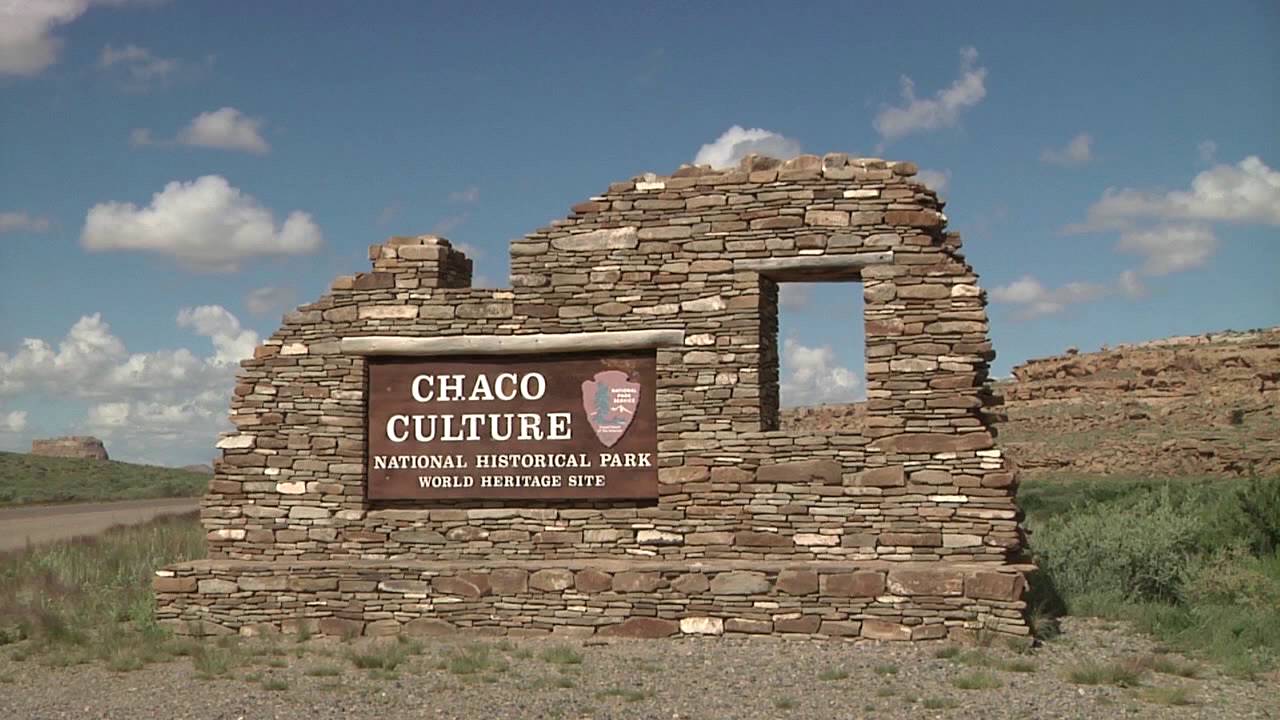
The Chaco Canyon area was inhabited until the land experienced a drought, and the people migrated to different areas. This was between 1150-1400 AD before Spanish explorers came to the continent.
Grand Canyon
The most famous attraction within the Grand Circle
The beautiful Grand Canyon is one of the wonders of the world and the perfect destination on your Grand Circle road trip. This National Park contains the majority of the gorge, but the northern rim affords even more dramatic panoramic views. The southern rim is largely viewable via major roads that run near the rim, with pull-offs and scenic roads to explore, hike, and camp.

The Northern Rim is a remote destination, and at least 1/2 day drive from the southern rim. Hooking around the canyon, you will see some of the great views of Marble Canyon and skirt close to Lake Powell along the way.
Great Basin National Park
A land of big extremes in southwest Nevada
Great Basin National Park is located on the Utah border in Nevada and is an area of great extremes. The massive Mount Wheeler sits over 2.5 miles above sea level and is capped with snow much of the year. At the base of the mountain, the land turns into an arid desert. Beneath the ground, an elaborate system of caves of stalagmites and stalactites grow from the ceilings and floor of Lehman Caves.
Mesa Verde National Park
View the ancient ruins of Cliff Palace in Colorado
Near the southwest corner of Colorado’s border, the Mesa Verde National Park area was preserved to protect the ruins of Cliff Palace, and the other surrounding Puebloan ruins of the area. Sitting high atop a mesa, the area is remote and was not protected until the early 1900s. Before that time, the ruins were prone to much pillage and vandalism. Today, the ruins have been partially restored and cleaned to resemble the way they looked prior.
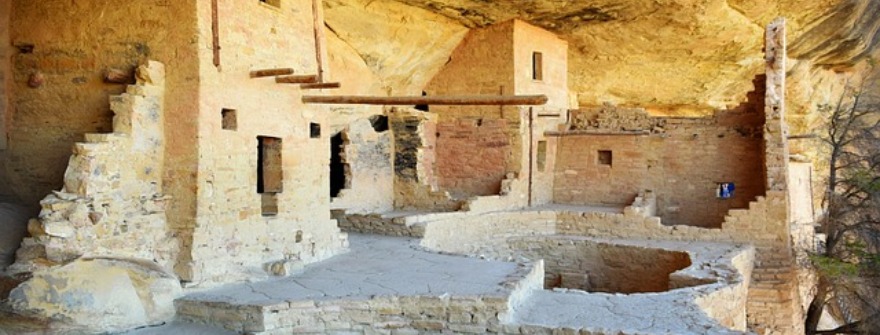
Zion National Park
Southern Utah’s enclosed canyon carved by the Virgin River
The Virgin River has done some spectacular work, leaving us with the giant canyon of Zion, in southern Utah. The canyon extends deep within the mountain range surrounding the river, as it gets slimmer and slimmer as it heads into the section known as “The Narrows.” This section is one of the ultimate challenges for hikers, as parts of it may require swimming.
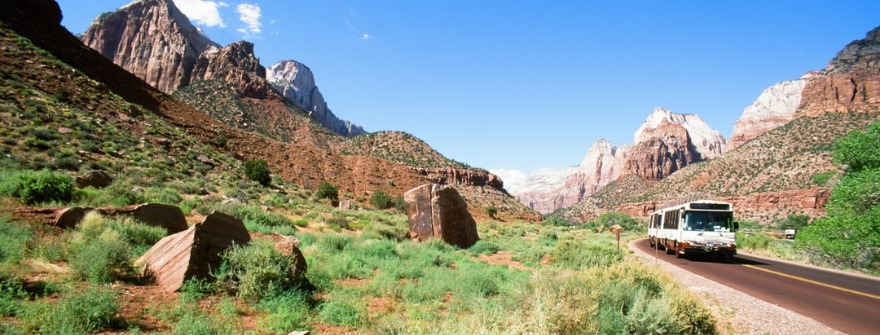
The canyon extends outside of the park boundaries into nearby Springdale Utah, which has extraordinary views of the canyon walls and red rocks. Directly before or after your trip to Zion, you will most likely want to head to Bryce Canyon, which is only around 72 miles away.
Capitol Reef National Park
Central Utah’s untouched Waterpocket Fold
Deep in the heart of Utah lies Capitol Reef National Park, a 100-mile long wrinkle in the earth’s crust. This elevated plateau-like area is recognizable from quite some distance, as the flat desert rises from the ground abruptly. Canyons, domes, and buttes can be found in this undisturbed southwestern gem. Few roads lead through the actual park, except State route 24. This makes the park a true representation of what Utah looked like long ago, and remains. You won’t find crowds making your stay uncomfortable since the majority of the park is accessible only by hiking.
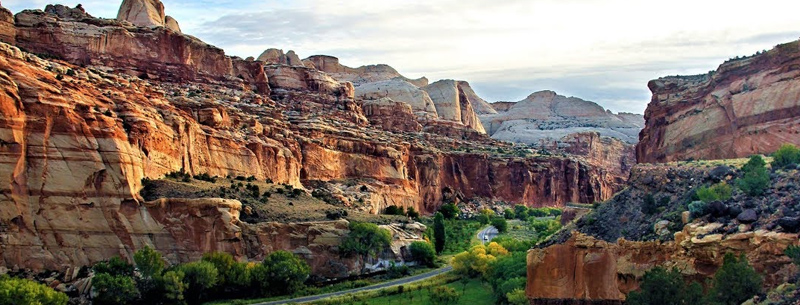
Monument Valley
The famous Four Corners Navajo landscape
Whether you’ve been there or not, it’s most likely that you’ve seen Monument Valley on television advertisements or in magazines. The gigantic “mitten” buttes lie in the desert expanse known as Monument Valley (which actually isn’t really a valley). The tall sandstone buttes have been carved by wind erosion over thousands of years to their current towering shapes.
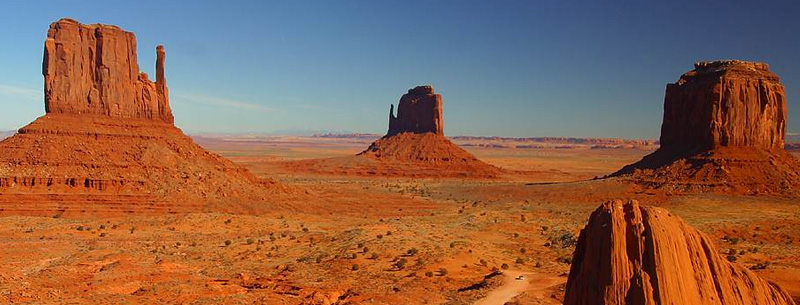
Getting to Monument Valley is an easy straight ride, but a long one. On Highway 163 in Arizona, the area is northeast of the Grand Canyon, and south of Canyonlands.
Glen Canyon Recreation Area
The man-made lake derived from the Colorado River
Glen Canyon Recreation Area is an artificially created damned up a section of the Colorado River that has formed the giant Lake Powell. With little to no vegetation, the area is unique in appearance for its crystal clear blue water and contrasting bright red rocks. The area is a huge attraction for Arizona and Utah residents for boating, with marinas directly on the lake. The artificial lake is evaporating, with the shoreline receding. North of Grand Canyon and south of many of Utah’s National Parks, the area is definitely worth the visit for its beautiful appearance and boating.
Grand Staircase Escalante National Monument
Utah’s 1.7 million-acre wilderness
Grand Staircase-Escalante National Monument was just declared in 1996 as a National Monument. The area is 1.7 million acres of fossil-rich territory, with high cliffs, low canyons, and desert wildlife. The monument can be seen on a drive to Bryce Canyon along the backroads and explored by foot. The area is well known for its multicolor sandstone walls, which have stripes of red, purple, brown, yellow, and white, indicating different periods of time in the earth’s history.
Antelope Canyon
The spectacular slot canyons of Page, Arizona
Arguably, Antelope Canyon is one of the most photogenic areas of the southwest. These narrow corkscrew slot canyons are part of the Navajo nation and are divided into two sections, Upper Antelope Canyon and Lower Antelope Canyon. Beams of light shine down into the canyon during the middle of the day during the summer months, as the walls display beautiful red and brown earth tones.
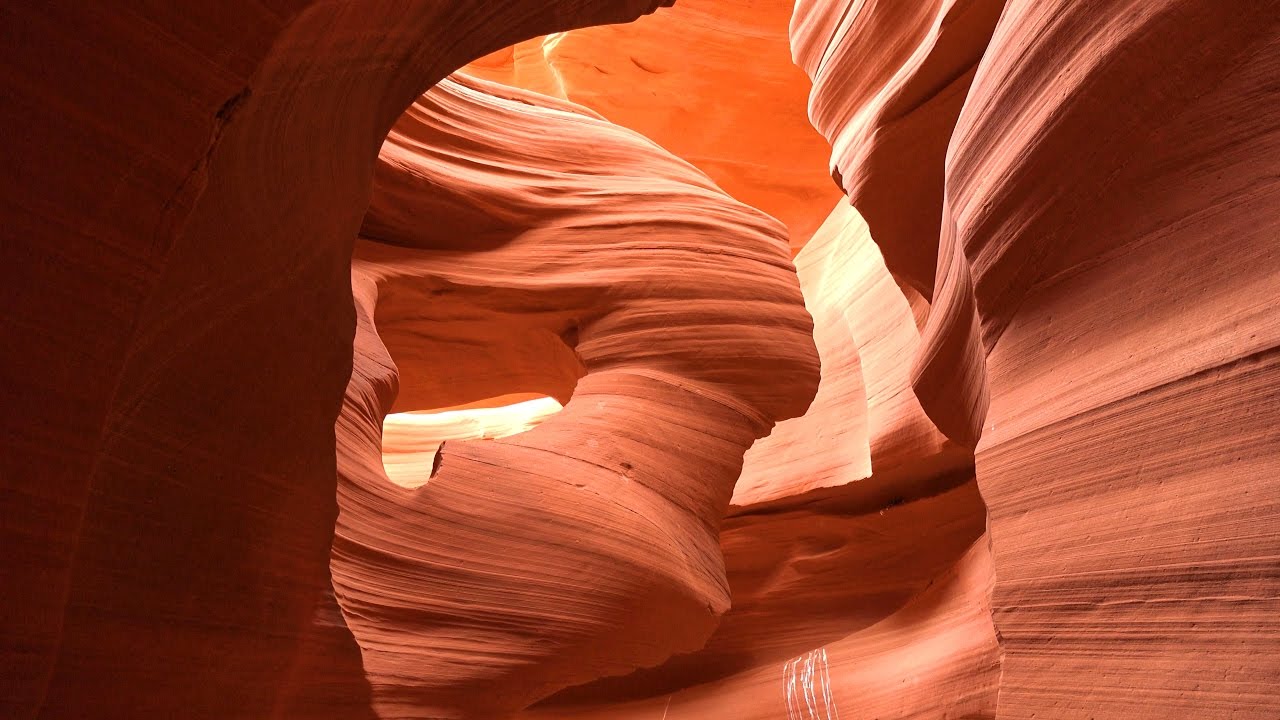
The Upper Canyon is where you can witness these beams of light, while the Lower Canyon is less visited and a more strenuous hike. Flash floods are a threat in this canyon, so precautions must be taken to avoid rainy days, even when rain has fallen recently in the area.
Canyon de Chelly
The protected Arizona region of Navajo Nation
Canyon de Chelly is an area of Navajo Nation of Arizona, including Canyon de Chelly, del Muerto, and Monument canyons. The area is part of the NPS, however, the Canyon de Chelly floor is only accessible through guided ranger hike. The main attraction of the park is towering Spider Rock, a huge rock tower in the middle of Canyon de Chelly.
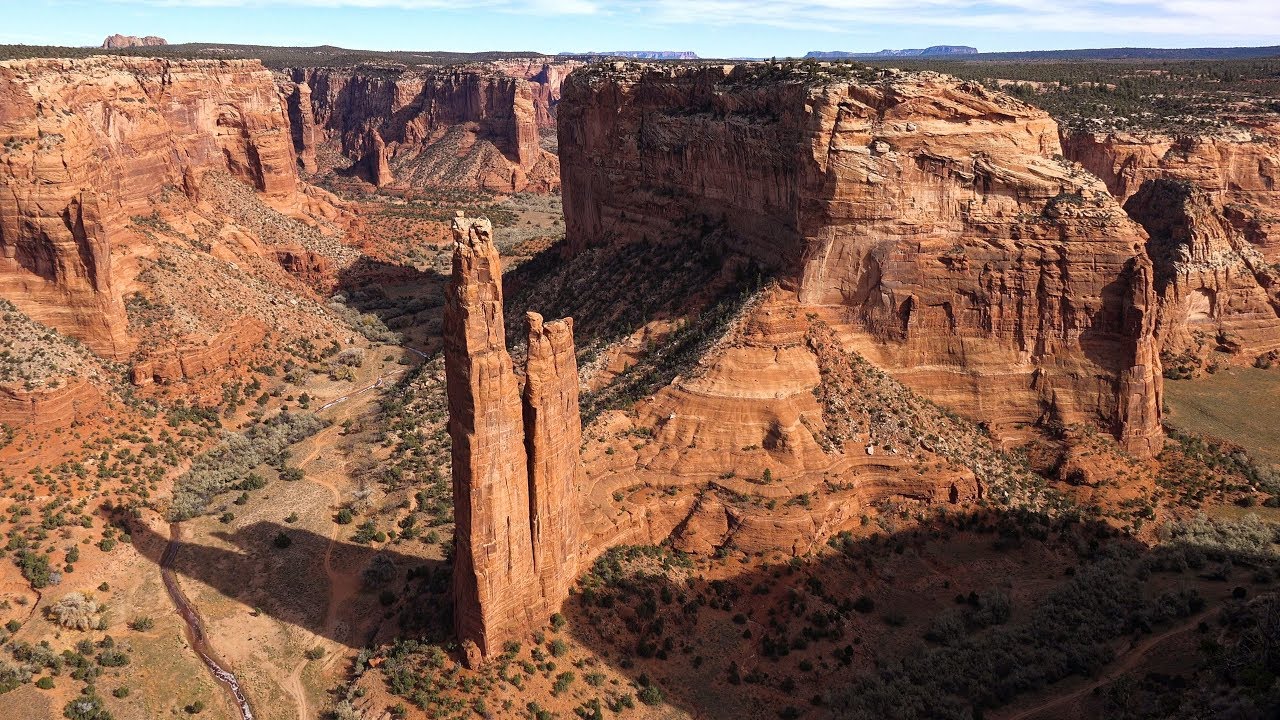
Sunset Crater National Monument
Rich volcanic history at the Arizona cinder cone of Sunset Crater
If you hadn’t known better, you would think that the cinder cone of Sunset Crater National Monument had just erupted last year. The last known eruption occurred around 1064 AD, making the rock very young at only 950 years! Located north of Flagstaff, Sunset Crater National Monument is located close to the Petrified Forest National Park, and Grand Canyon.

Marble Canyon
The Colorado River’s gateway to the Grand Canyon
Marble Canyon is part of Grand Canyon National Park and is famous for its Navajo bridge, which spans the gap of the Colorado River, allowing Route 89A to pass over it. The Grand Canyon starts just down the river. The walls of the canyon look like stacked bricks, with a near-vertical wall that heads down to the canyon.
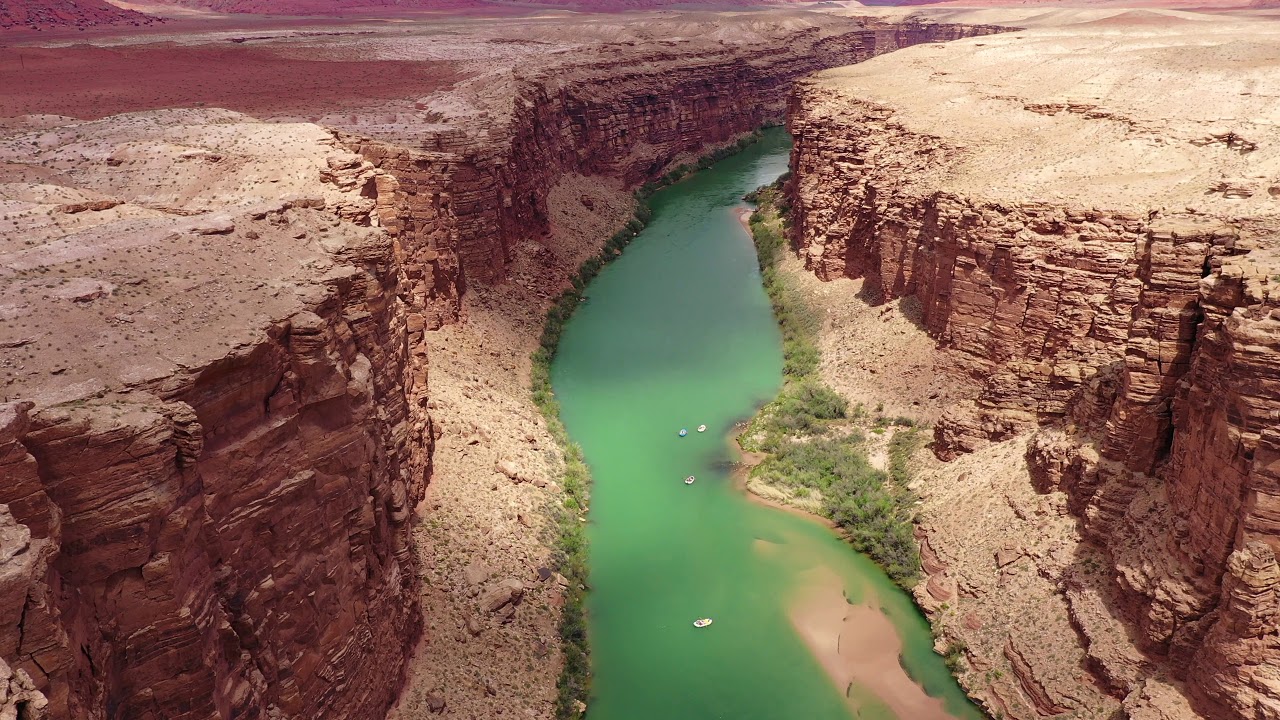
Petrified Forest National Park
Visit the amazing prehistoric petrified logs of this Arizona National Park
In the northeast of Arizona, you won’t find any living trees in the Painted Desert badlands of Petrified Forest National Park. Millions of pieces of petrified wood line the desert floor, some large, some small. This area was once a lush tropical region, and also a bed of volcanic activity. The logs from some of these trees (which are extinct in the northern hemisphere) over time were washed into ravines and buried under volcanic ash and gravel. Other volcanic rock replaced the buried wood, and over millions of years, became the petrified wood (which is actually now rock) that you can see in the park. Remarkable brightly “painted” hills line the outside of the desert area. Also in the park is the Agate House, a Native American house made of petrified wood, and petroglyph panels dating back to approximately between 1000 A.D. and 1300 A.D.
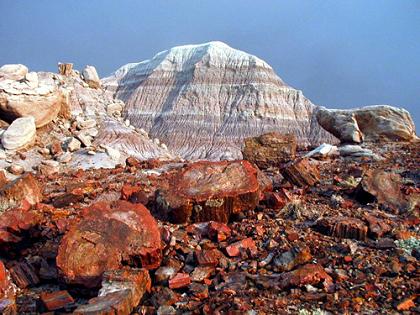
Valley of the Gods
The isolated and rustic Four Corners mesas in Utah
Looking for a true, rustic southwest experience off the beaten path? You can’t get much more rugged or rough than the Valley of the Gods. Small canyons, buttes, cliffs, and sandstone mesas can be found in this deserted area which can only be accessed via a 17-mile long dirt road north of Bluff, Utah.
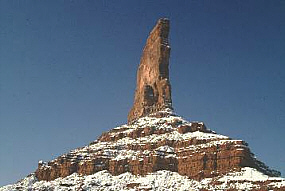
Havasu Falls
The Grand Canyon’s famed beautiful crystal clear blue waterfalls
Havasu Falls is a set of waterfalls found near the Grand Canyon. The colorful brownish-orange rocks contrast beautifully with the crystal clear blue-green water, which is tinted by algae. The area can be accessed via a long hike to the remote area, but is well worth the strain!
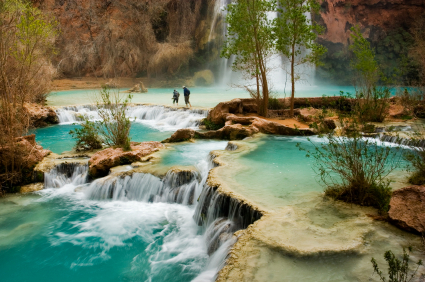
Window Rock
The headquarters of Navajo nation
Window Rock is the headquarters of present-day Navajo Nation and the scenic landmark of the giant sandstone rock seen below. The sandstone has a giant window in the middle of it and has the town of Window Rock named after it. It can be found on the Arizona – New Mexico border, northeast of Flagstaff, and northwest of Albuquerque.
Goblin Valley
The sandstone hoodoos of the strange Goblin Valley
Like Bryce Canyon and Cedar Breaks, Goblin Valley is comprised of thousands of rock formations called hoodoos. In this case, the hoodoos are small in comparison to Bryce and Cedar Breaks but make for an impressive hike and interesting experience. Goblin Valley is a state park in central Utah, near Capitol Reef National Park and the Green River. The sandstone “goblins” make for excellent photography and a moderate hike.
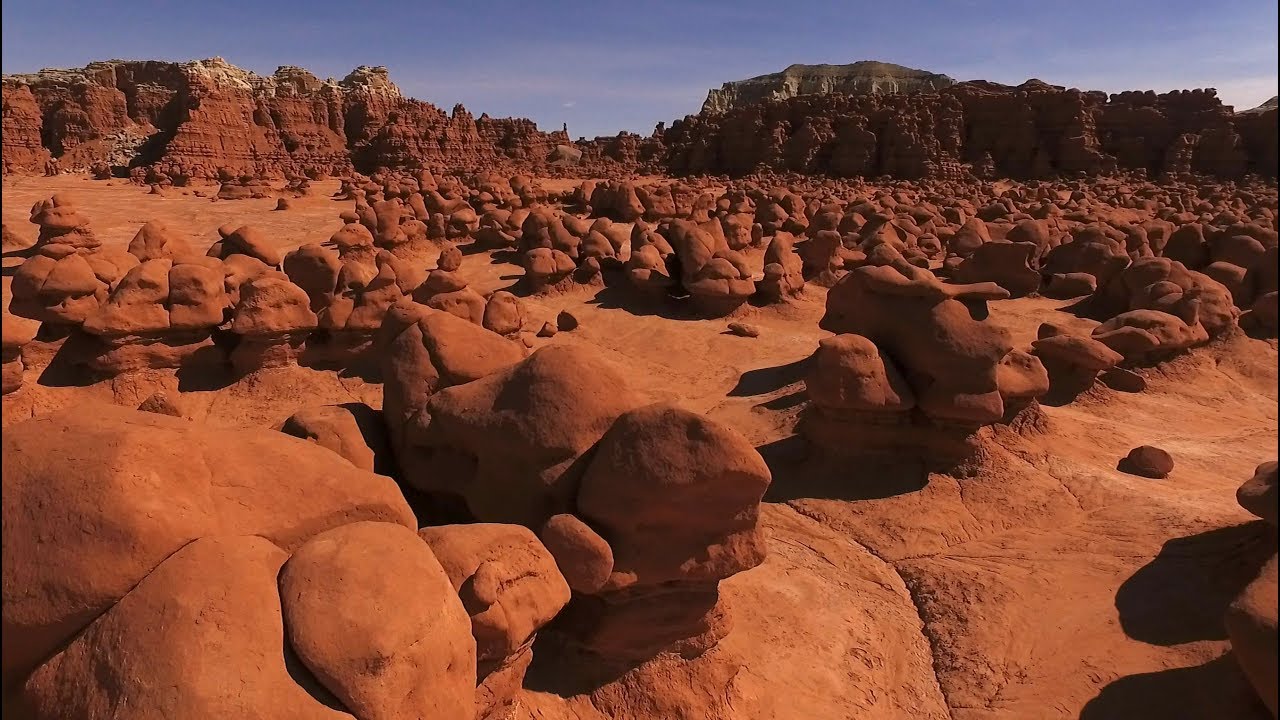
Coral Pink Sand Dunes
The colorful dunes of Coral Pink Sand Dunes State Park
Coral Pink Sand Dunes State Park in southern Utah may rival the dunes of Death Valley. These pink sandhills were formed from the eroded cliffs that surround the valley, and are a popular attraction for ATV riders. The warm reddish pink tones are best photographed later or earlier in the day when the sun will warm the colors even further.
Kodachrome Basin State Park
The tall chimney formations of Kodachrome
Only miles east of Bryce Canyon you will find the impressive sandstone chimneys of Kodachrome Basin State Park. This is an easy stop on your Grand Circle road trip that won’t take a lot of time to complete. These chimneys are thought to be the result of geysers that solidified with hard rock, as the soft sandstone around it withered away, leaving the chimney.

Cedar Breaks National Monument
The beautiful red cliffs and amphitheater area of southern Utah
Cedar Breaks National Monument is an easy drive from Cedar City. The colors of the amphitheater are remarkable, and it’s another easy stop on your trip throughout the Grand Circle. The hoodoos and rock spire formations are similar to Bryce Canyon, but often not as crowded. Cedar City has many accommodations and hotels to choose from as you plan your trip to Bryce and Zion.
A Map of Some of the Major Grand Circle Destinations
As seen on the map:

A. Grand Canyon
B. Sunset Crater National Monument
C. Petrified Forest National Park
D. Canyon de Chelly
E. Chaco Culture National Historic Park
F. Mesa Verde National Park
G. Black Canyon of the Gunnison
H. Arches National Park
I. Canyonlands National Park
J. Capitol Reef National Park
K. Grand Staircase-Escalante National Monument
L. Bryce Canyon
M. Cedar Breaks National Monument
N. Zion National Park
O. Great Basin National Park
